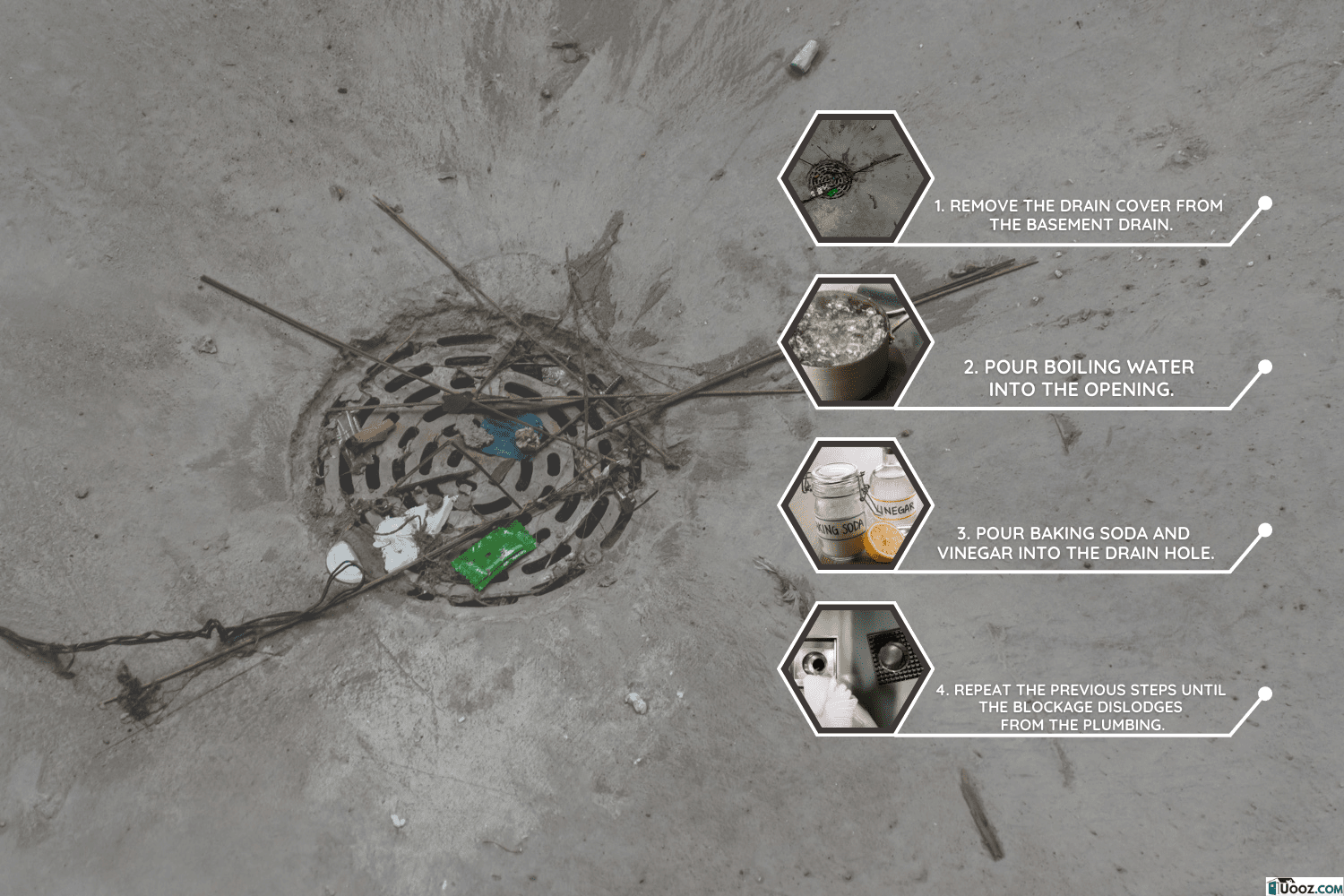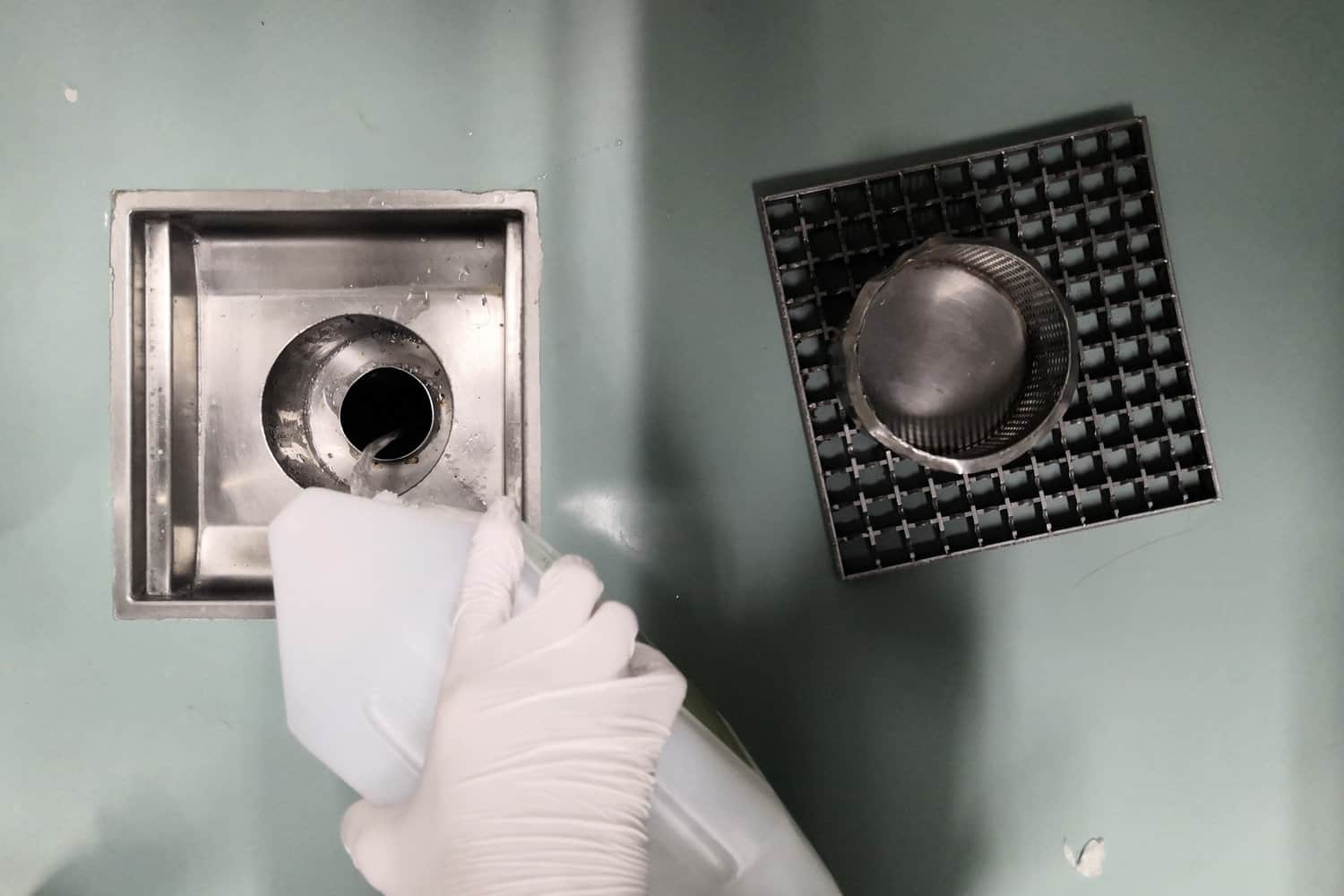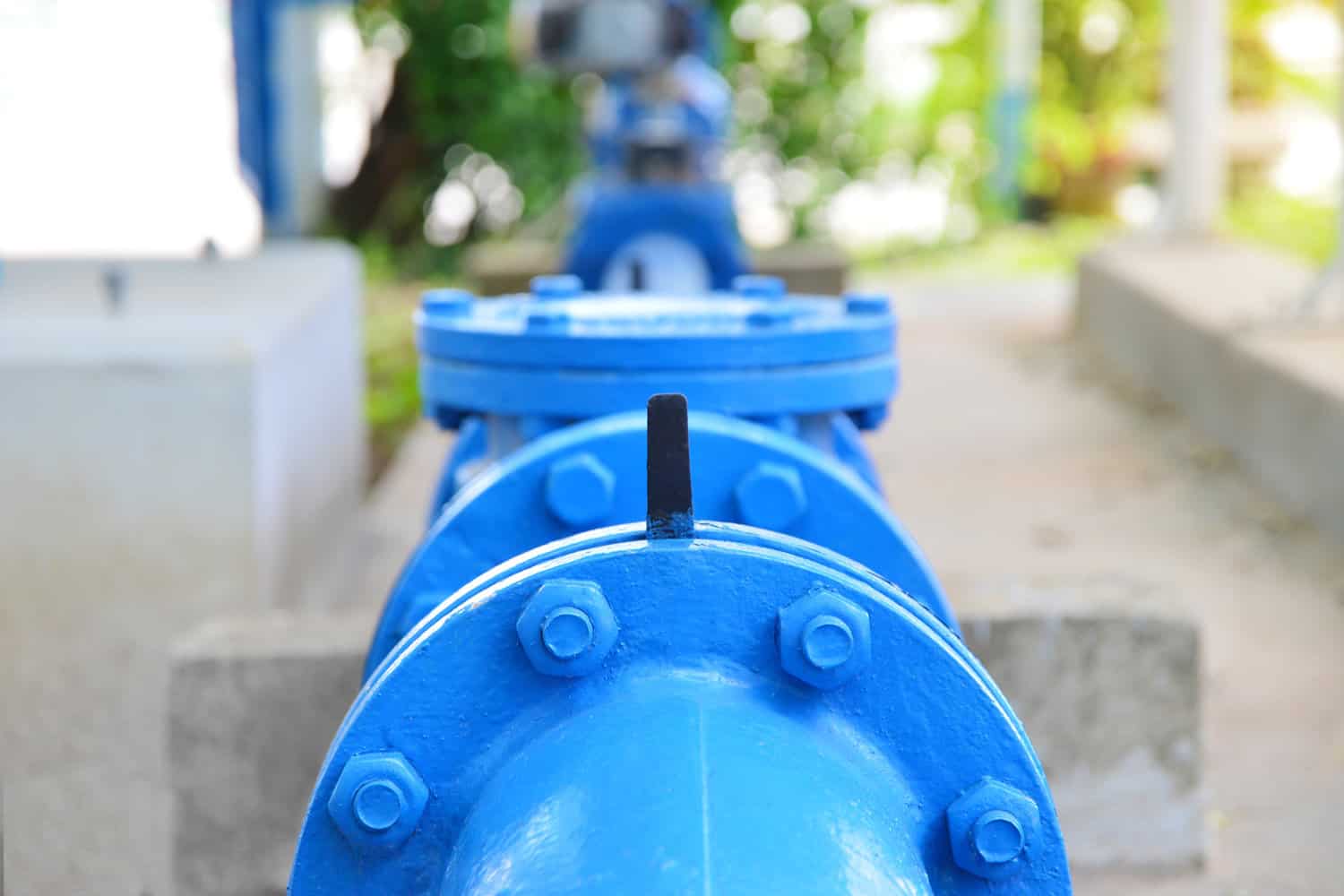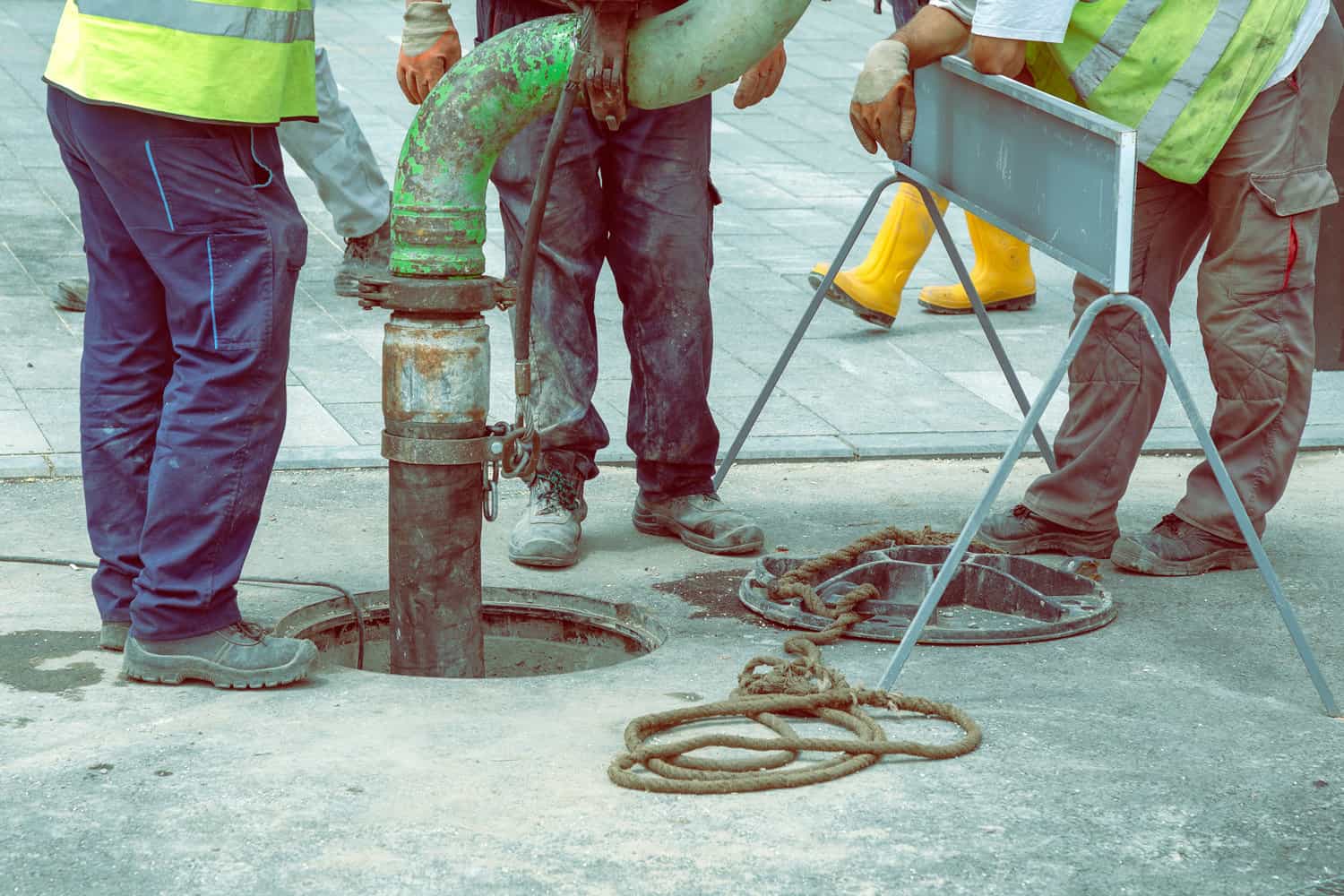After taking a relaxing shower, you notice that the basement drain backing up water. Now, you're looking at the puddle while thinking about what you can do to fix this issue. We researched this concern for you and consulted with industry experts to give you the following information.
A clog is usually the culprit to your basement drain backing up after you use the shower. Follow these steps to help remove this blockage:
- Remove the drain cover from the basement drain.
- Pour boiling water into the opening.
- Pour baking soda and vinegar into the drain hole.
- Repeat the previous steps until the blockage dislodges from the plumbing.
Take note that these steps may only work with fairly light blockages in your basement’s drain system. So continue reading as we talk about another method to ensure your basement drain is free of objects that can block water passing through it.
Why Is My Basement Drain Backing Up After A Shower?

Oftentimes, the basement drain backing up after a shower means a clog is in the property’s main drain line. Some of the objects that can block this plumbing line are:
- Tree roots
- Facial tissues
- Dental floss
- Hair
- Food grease
A warped sewer pipe may also cause the main drain line to become blocked. This damage might originate from factors like corrosion, shifting soil, and increased traffic.
How To Unclog A Basement Drain?

You can remove a relatively small clog in the basement drain without relying on intensive repair and/or replacement techniques. Also, you might be able to find most of the items you’ll need for this procedure in your house or at a local home depot.
What You’ll Need
- Vinegar
- Baking soda
- Boiling water
- Screwdriver
Step-by-Step Guide
- Unscrew the drain cover and set it aside temporarily.
- Pour about five liters of boiling water into the opening.
- Pour baking soda into the basement drain liberally.
- Dispense vinegar into the drain hole slowly.
- Stop pouring vinegar until the bubbles from the mixture subside.
- Repeat steps 4 and 5 as many times as necessary.
- Turn on the shower and check if the basement drain is still backing up.
- Return and secure the drain cover to its original location.
Check out this product on Amazon.
Take note that you can repeat this entire process until you can clear the clog in the basement drain. Don’t forget to mop the basement floor after you complete this task, especially since mixing vinegar and baking soda can leave a mess.
You can also check out this video for a visual guide to this procedure:
After completing this procedure, you might think that you didn’t do a thorough job if you see some water in the floor drain. Keep in mind that floor drains should have water in them. You can find the reason why water is in the floor drain by checking out our post on that topic.
How To Clean And Unclog The Main Sewer Line?

If the procedure from the previous section didn’t provide satisfactory results, you might need to unclog the main sewer line using deep cleaning methods. But unlike the previous method, deep cleaning a sewer line can be a laborious job that also requires you to follow proper safety protocols.
Some of the preventive measures you need to follow are:
- Follow the property’s plumbing diagram. You may need to dig into the soil to reach the main sewer line, which can put other equipment, such as electrical wiring, at risk of harm.
- Always wear protective gear. Equip yourself with goggles, leather gloves, and work shoes with excellent traction.
- Place a warning sign in the immediate area. The sign will warn passersby that walking in and around the work area can be hazardous to their well-being.
- Only use equipment, materials, and tools that are in good working condition. Replace any item that may increase safety hazards while you’re working on the main sewer line.
- Always keep the work area as clean and tidy as possible. Place the items that you’re not using in a safe area to avoid slips, falls, and other injury-causing accidents.
After completing the necessary preparations, continue this procedure by following these steps:
What You’ll Need
- Drain snake machine
- Full-blade attachment
- Half-blade attachment
- Mop
Step-by-Step Guide
Step #1: Find The Sewer Line
Bear in mind that the main sewer line’s location generally differs for each household. But you can typically find its location by searching for a pipe opening that’s sticking out of the ground. This line should also have a notch or square knob as its cover.
Step #2: Fill The Line With Water
Open the shower in your home, which should make the water in the basement drain back up. However, this step should also make water in the main water line rise. Allow the water to rise in the main pipe until it's almost to the brim.
Step #3: Insert The Drain Snake
Attach a full-blade attachment to the drain snake machine. Then, insert the attachment and its line into the main sewer line.
Turn on the drain snake while feeding the line into the pipe continuously. You’ll know when to stop feeding the drain snake line as soon as you feel that the blade catches the clog.
Step #4: Change The Attachment
Stop the sewer drain snake machine once you see the water overflowing from the main line. Next, retract the drain snake hose and remove the debris that the line caught during the initial run. Then, change the full-blade attachment to a half-blade module.
Insert the drain snake line into the main sewer pipe again. Don’t forget to turn on the machine as you’re feeding the hose through the pipe. You’ll know if the clog is gone if the water in the sewer line recedes significantly.
Step #5: Do Another Pass With The Sewer Drain Snake
You can close the main sewer line’s cover at this point. But you can also continue by changing the half-blade attachment to the full-blade unit.
Next, insert the drain snake into the main sewer line again. Turn on the machine and allow it to run through the pipe to remove any residual blocks.
Step #6: Inspect The Basement Drain
Turn on your shower once you remove the clog from the main sewer line. Then, go to your basement drain and check if water is still backing up the main sewer line. If the problem persists, a warped pipe in the property’s main plumbing system might be causing this problem.
Step #7: Clean The Area
Don’t forget to clean your basement after unclogging the main sewer line. The backed-up water from the main sewer line likely left a mess in that area.
Wear rubber boots and mop your basement floor. Then, remove any standing water with a shop vacuum cleaner. Also, ensure that you open the doors and windows in your basement to help eliminate the smell of sewage.
Check out this drain cleaner machine on Amazon.
Also, check out the following video for a visual representation of this procedure:
Warning: Don’t overextend the drain hose line, especially when the blade attachment is still spinning. Doing so can bring harm to other parts of the plumbing system, which may result in costly repairs.
At this point, you might also find it interesting to learn about the best pipe to use for underground drainage. If so, read our post highlighting that subject matter.
How Much Does It Cost To Unclog A Sewer Line?

Professional services to unclog a main sewer line typically cost around $350 to $650. Take note that the expenses related to this procedure often depend on different factors, including the method to use to remove the blockage.
Here are some examples of the techniques used in cleaning main sewer lines and their estimated costs:
- Drain snake: $100 to $500
- Hydro jet: $350 to $600
- Chemical cleaner: $75 to $300
- Rodding: $150 to $600
You can also choose to replace the clogged section of the main sewer line with a new unit. But the typical price for this procedure usually falls around $50 to $250 per linear foot.
Plus, the expenses may also increase or decrease depending on the cause of the blockage. Some examples are:
- Broken line repair: $1,500 to $3,000
- Sagging pipe replacement: $1,500 to $3,000
- Tree root removal: $100 to $600
Final Thoughts
Remember, check your basement drain for a blockage if it's backing up after you use the shower. If it's a reasonably light clog, you can use vinegar and baking soda mixture to remove it. Otherwise, a deep cleaning procedure to the main sewer line might be the ideal solution to this problem.


